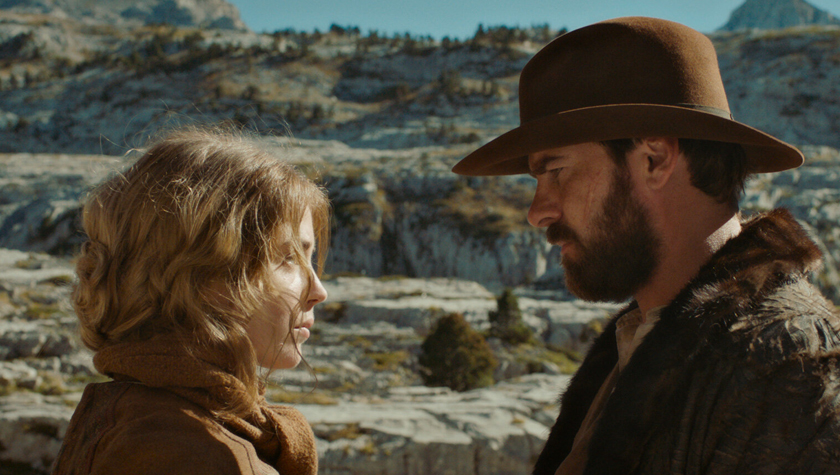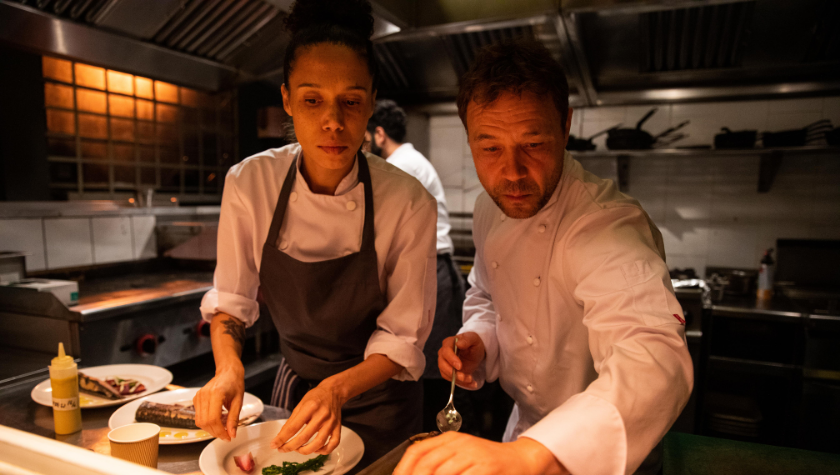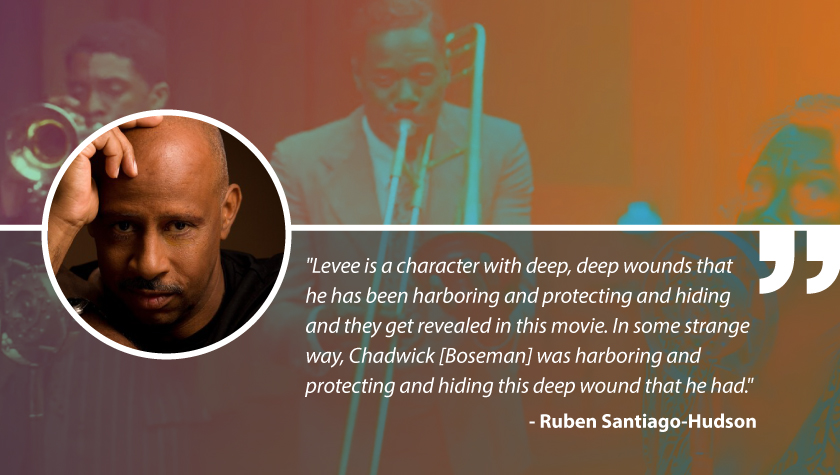5 Screenwriting Takeaways from 'Ma Rainey's Black Bottom'
January 14, 2021
Rich colors and stellar dialogue spoken by amazing performers are just some of the factors that makes Ma Rainey’s Black Bottom well worth the watch the next time you turn on Netflix. Undoubtedly an awards contender this season, Ma Rainey’s Black Bottom has origins going back nearly 100 years, when the real life singer Ma Rainey herself was performing in blues clubs during the late '20s, before taking a turn as a hit stage play in the early '80s, before finally becoming a Denzel Washington-produced film.
This latest adaptation takes place over the course of one day in 1927 when Ma Rainey (the incomparable Viola Davis) comes to a Chicago studio to record an album with her band, which includes an overconfident young trumpeter named Levee (Chadwick Boseman in his final theatrical role).
Ma Rainey, known as the “Mother of the Blues," was a true tour-de-force and the film portrays her control over her band and managers at a time when racial division between Black performers and white managers were high. The film masterfully tackles various themes around race, sexuality, exploitation, power and generational division.
Here are five screenwriting takeaways from Ma Rainey’s Black Bottom to consider as you develop your historical-based screenplays.
1. Adaption means changingYou can’t take everything from original material. Whether a book, play or article, the original work will have to change to accommodate the media for which it’s being produced. Ma Rainey’s Black Bottom is no exception.
Based on the stage play by August Wilson, Ruben Santiago-Hudson took the screenwriting reins on the film project. Santiago-Hudson has some familiarity with Ma Rainey’s Black Bottom, as well as with Wilson’s work — he's Tony®-nominated for directing one of Wilson's plays and has been involved with every other work of the playwright's.
But when it came to adapting Ma Rainey’s Black Bottom, Santiago-Hudson says, “One of my rules as a writer is that everything is not sacred, which goes totally against what I think about August’s work, because I think all of it is sacred. So I had to treat August the way that I treat my own writing. And I had to figure out what story I’m trying to tell.”
He took the source work and created a version that went beyond the stage, which included cutting scenes that may have bogged down the film's pace while adding others to hit emotional points harder. The Netflix film runs 1:34, whereas the play often exceeds two hours.
The title of the film is Ma Rainey’s Black Bottom, but with the exception of the opening scene, Ma Rainey herself doesn’t appear for a pretty big stretch of time. But learning about the characters doesn’t always have to include the actual character being on-screen (think: the infamous Keyser Söze in Usual Suspects, for example). For nearly the entire first act of the film, we’re learning about the band and how they interact, but we’re also learning about their view of Ma Rainey and how they will interact with her.
It’s obvious that Ma Rainey is a force to be reckoned with, and Levee is riding high on ego and believes he’s the leader of the band. He also feels he deserves his own recording contract. The conflict is set up when young Levee tells his band that they need to play his timing which is more upbeat, yet they believe Ma Rainey’s version should not be messed with.
What the writer is planting into the story at this time is how conflicts will play out later on. We see the power dynamics of the band when Levee insists they play his version of the song as well as the generational divide between the young Levee and the older gentlemen.
Not all plays designated to a stage mean the film version will have minimal locations. But with Ma Rainey’s Black Bottom, the writer does take a minimalist approach in where the action takes place. The majority of the film takes place in just a handful of locations, such as the band's rehearsal room and recording studio.
While these aren’t the only locations, the fewer locations needed in telling the story can mean smaller budgets and, in today’s COVID-conscious world, easier shooting capability. This can make a film a better investment.
Show don’t tell. As screenwriters, this is one of the first rules hammered into our heads. But there’s also nothing wrong with dialogue so long as you do it right. Playwrights use monologues and dialogue to convey what a character thinks; there are no close-ups or cutaways on a stage. Santiago-Hudson has a lot of dialogue in this film, but it’s done masterfully. We’re compelled by what the actors are saying, a nod that extends beyond their talent and the screenwriters words to the director, editor, cinematographer and others.
There shouldn’t be dialogue if there isn’t a reason to have it, but there’s nothing wrong with having a lot of dialogue, either, if done correctly.
Both Ma Rainey and Levee are the main talkers in the film, but they’re not talking to themselves in mirrors. Characters need other characters to talk to (even Tom Hanks had a volleyball he could chat with in Castaway), but those can’t be just sounding boards. Supporting characters play critical roles. They help drive needed exposition and react to the main characters expressed thoughts helping the audience contextualize the exchange.
Bottom line: every character is critical. If they aren’t part of moving the story forward in some way, then they shouldn’t be there.
Final Takeaway: Ma Rainey’s Black Bottom is a compelling drama that tackles generational divides, power dynamics in music, sexuality and racism in the 1920s. This film is now available on Netflix and currently playing in select theaters.
Written by: Steven Hartman
Steven Hartman is an award-winning, optioned screenwriter. He was a Top 5 Finalist in Big Break’s Historical Category in 2019 and won Best Action/Adventure in Script Summit’s Screenplay Competition in 2021. He holds a Bachelor of Arts degree from Columbia College and had internships at Jerry Bruckheimer Films and Village Roadshow Pictures. Steve is a full-time writer and creative video producer by day and a screenwriter and novelist by night.- Topics:
- Discussing TV & Film




